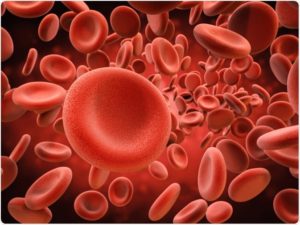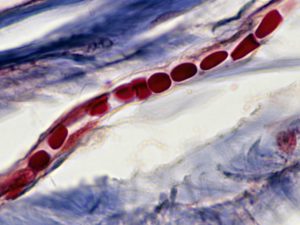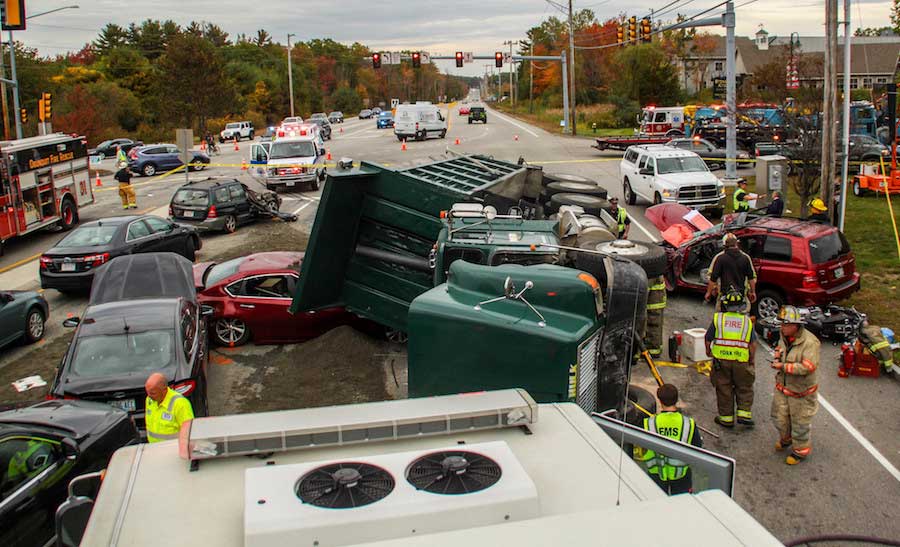LITTLE ERRORS, BIG PROBLEMS
Kellen, a 27 year old software developer, ordinarily has radiant, brown skin. It is disturbing to see him looking so pale. There is an especially sickly pallor to his lips and fingernails, which are ash-blue, rather than pink. To add to the concern, the whites of Kellen’s eyes, which are usually slightly jaundiced, have become intensely yellow.
Kellen is writhing in pain. His pulse is racing – there is no need to consult the nurses’ chart or palpate the radial artery; even across the room I can discern the fluttering in his neck veins and arteries. Worst of all, he is gasping for breath with rapid, labored efforts that spastically lift his collarbones. Agony and terror grip his face.
I must do something at once to remedy this crisis. But how can I correct a problem that is so widespread? This illness is affecting the red blood cells in his body. That means that it is everywhere.
TRUCKS ON THE DELIVERY ROUTE
Normally red blood cells (RBCs) whirl around our circulation like tiny dump trucks, hauling oxygen through the network of arteries that branches out like a highway system to every cell in the body.
These RBCs are beautifully designed, flexible discs of about seven microns in width that fit snuggly inside a capillary, like a truck nudging right up to a loading dock, to facilitate the transfer of oxygen to adjacent tissues.

Picking up a load of their precious cargo of oxygen as they navigate the tiny capillaries of the lungs, RBCs flow through the heart to ever-narrowing secondary and tertiary roads of arteries. They finally drop off the oxygen to individual cells on the one lane streets of capillaries all over the body.
RBCs retain their round shape throughout their lifespan of 120 days, despite being squeezed repeatedly during their delivery runs through the tiny labyrinth of capillaries. Each cargo run takes about twenty seconds.

While the individual capillaries may be small, the whole highway system is astonishing. In each of us God has crammed about ten billion tiny capillaries, and the total mileage of capillaries in the combined arterial system of just one human body is over 60,000 miles. Yes, inside your body is a roadway network long enough to circle the world more than twice!
SPECIAL DELIVERY
The highway system has to be extensive, because every cell in your body requires a continuous supply of oxygen. Starved of this essential element, cells begin to die in just minutes.
Consider what happens if even a small artery becomes blocked. If a blood clot lodges in an artery, it stops the blood flow as surely as a fallen tree halts traffic on a busy street. If the red blood cells stack up behind the obstruction for just a few minutes, everything downstream will die. Depending on the location of the blockage, the result can be a devastating stroke or heart attack that can kill or disable the whole person.
This is how high stakes every instant of a human life is. It is as though a single traffic stoppage on one back street can devastate an entire nation.
DEAD STANDSTILL
In Kellen’s case there is nothing wrong with the highway system. The roads of his circulation, the arteries, are in good shape. The problem is the vehicles themselves. Suddenly all over the delivery route, they are simultaneously malfunctioning.
After dropping off the load of oxygen, these cells do not continue contorting through the capillaries. Instead, they deform in shape, becoming long and spikey. To make matters worse, these RBCs are not only freakishly misshapen, but also rigid, so they lodge in small vessels like jackknifed semis on narrow roads.
For Kellen that means torment, as the parts of his bones with low oxygen supply die painfully. Worst of all, the central supply depots of oxygen, the lungs themselves, are cluttered with wrecks. Kellen is suffering an “acute chest syndrome” in which the capillaries of the lungs are occluded by the gunky aggregates of stiff RBCs, so that all bodily systems are being robbed of oxygen.
How can we break the gridlock? We have to identify and correct the underlying cause of this massive problem. And it is stunning how seemingly insignificant and small that is.
Maybe you are aware of how minute a bacterium is. It is invisible to the naked eye. It is just a single cell, and even that cell is dwarfed by any one of your own body’s cells, which number in the trillions. Tinier still is a virus – far too small to see even with a microscope. But the root of Kellen’s major ailment is even more miniscule than that. A tiny error has led to a life-threatening crisis.
To be continued…
Dr. Bill Maynard
